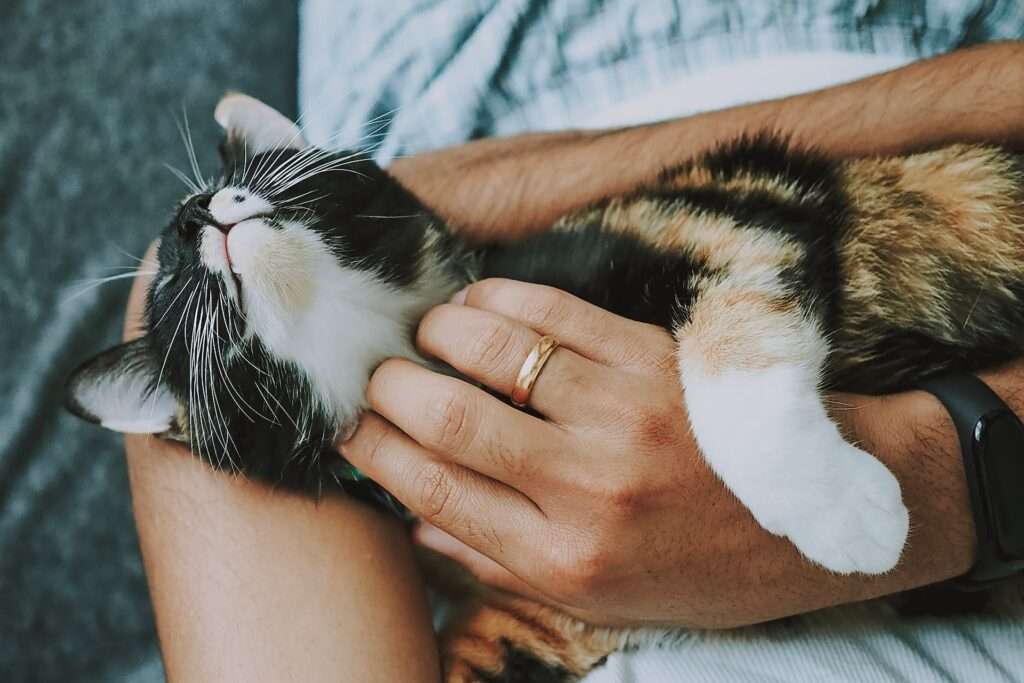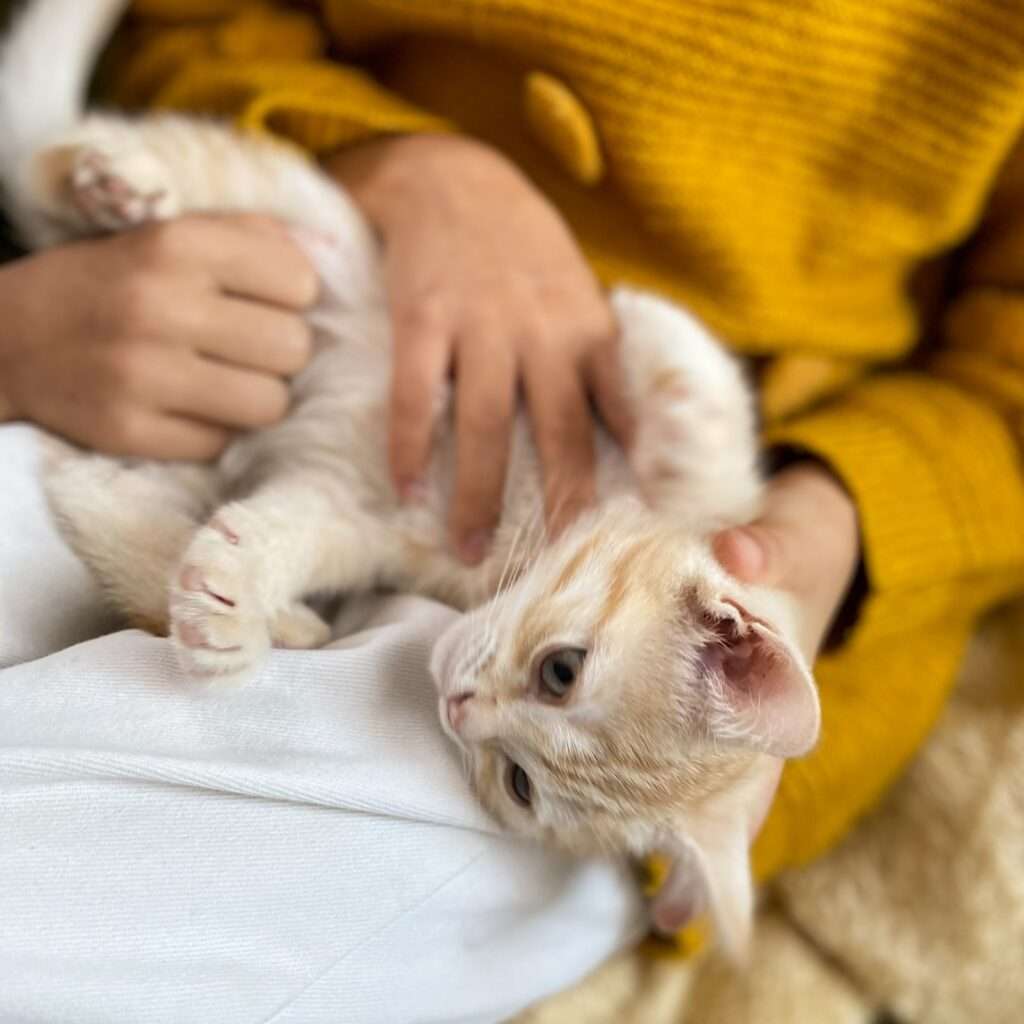Why Doesn’t My Cat Purr? Exploring the Possible Explanations
As cat lovers, we are captivated by the enchanting melody of a purring feline, a symphony that resonates with comfort and happiness. But what about those enigmatic cats who withhold this delightful gift? And why doesn’t my cat purr?
Get ready to unlock the secrets and uncover the purr-plexing truths as we dive deep into the enchanting world of feline purring. In this purr-suit of knowledge, we’ll unravel the science behind this captivating phenomenon, debunk common misconceptions, and provide valuable insights on what to do if your beloved cat isn’t purring.
Whether you’re a seasoned cat aficionado or a curious soul seeking to decode the language of our whiskered friends, this article is your guide to unraveling the purr-fect mystery. Brace yourself for a fascinating exploration of the intricacies of purring that will leave you enchanted and enlightened.
What is Purring?

Purring is more than just a delightful sound that warms the hearts of cat lovers worldwide—it’s a fascinating physiological mechanism! When your feline friend purrs, her laryngeal muscles work their magic, rapidly contracting and relaxing to create a symphony of vibrations in her vocal cords.
These gentle vibrations give rise to that familiar, comforting rumble we associate with contented kitties. But purring isn’t just a pleasant auditory experience; it’s believed to have therapeutic benefits for both cats and humans alike. Scientists speculate that the frequency of these vibrations, typically ranging from 25 to 150 hertz, may actually contribute to healing and stress reduction.
So, the next time your fluffy companion curls up beside you, emitting those enchanting purrs, bask in the knowledge that there’s more to this delightful phenomenon than meets the ear. It’s a harmonious symphony of relaxation and well-being, a gentle massage for the soul, and a reminder of the profound connection we share with our feline friends.
Why Do Cats Purr?
Purring—a mesmerizing symphony of sound that resonates from the depths of a cat’s being—is far more than a simple expression of contentment. It serves a multitude of purposes, revealing the intricate language of our feline companions.
At its core, purring is a powerful form of communication. Mother cats instinctively use purring to reassure their precious kittens, creating a soothing melody that whispers, “All is well, my little ones.” It acts as a tender lullaby, conveying a sense of security and warmth.
But purring goes beyond communication; it delves into the realm of emotions. When a cat purrs, a cascade of endorphins is released—a natural opiate that soothes both body and mind. It’s a cat’s self-created medicine, infusing their being with a gentle euphoria and fostering an overall sense of well-being.
The benefits of purring extend beyond the individual cat. It’s a profound coping mechanism, a tool to navigate the complexities of a cat’s world. Purring has the remarkable ability to ease stress and anxiety, creating a serene sanctuary amidst the chaos of daily life.
Why Doesn’t My Cat Purr?
Ah, the enchanting melody of a purring cat—a soothing symphony that resonates with happiness and contentment. But what if your beloved feline companion seems to have missed the purring memo? Rest assured, there are reasons why some cats don’t purr, and understanding them can deepen the bond between you and your enigmatic friend.
Firstly, it’s essential to acknowledge that not all cats are born with a strong purring mechanism. Like the unique variations in their personalities, cats possess diverse purring capabilities influenced by their genetics. Some cats may purr more softly or infrequently, while others may not purr at all. It’s a distinctive trait that makes each cat a marvel in their own right.
However, if your cat has never purred or has suddenly stopped purring, it’s crucial to consider potential health concerns. Underlying medical conditions, such as dental problems, respiratory issues, or neurological disorders, can hinder their ability to purr. Consulting with a veterinarian will help ensure your feline friend’s well-being.
In some cases, the absence of purring may stem from behavioral factors. Cats are complex creatures, and their emotions play a significant role in their vocalizations. If your cat is experiencing stress, anxiety, or fear, purring may temporarily elude them. In such instances, seeking the guidance of a professional can help address the underlying issues and create an environment where your cat feels safe and content.
Remember, every cat is a unique individual, with their own preferences, quirks, and ways of expressing themselves. Whether your feline friend purrs like a symphony or chooses to communicate in other ways, cherish the profound connection you share. For in the world of cats, silence can speak volumes, and love knows no purr.
How to Encourage Purring in Your Cat

Unlocking the sweet serenade of purring in your beloved feline companion is an art that requires a delicate touch and a loving heart. To coax those soothing vibrations from your cat’s soul, here are a few steps you can take, guided by the language of love and contentment.
First and foremost, create a haven of comfort for your precious feline friend. Provide her with a plush bed, adorned with soft blankets where she can luxuriate in pure feline bliss. Offer an enticing array of toys that captivate her curiosity and whisk her away into a world of playful delight.
But comfort alone is not enough. Shower your cat with the attention and affection she craves. Engage in regular playtime sessions, inviting her to chase, pounce, and frolic to her heart’s content. These moments of shared joy and companionship will help create an unbreakable bond and kindle the fires of purring within her.
Emotional well-being is equally crucial. Craft an environment that exudes tranquility, shielding her from the hustle and bustle of the outside world. Find solace in gentle strokes and tender cuddles, whispering reassurances of your unwavering love. Your calming presence will be her sanctuary, inspiring purrs of gratitude and serenity.
Should anxiety cast its shadow upon her spirit, nature offers remedies in abundance. Seek solace in the wonders of catnip, whose enchanting aroma can transport her to a realm of blissful relaxation. Consider the gentle embrace of calming pheromones, a soothing balm for her worried heart.
As you embark on this journey, be patient, for purrs are a delicate gift, offered by your feline companion on her own terms. Embrace the magic of these precious moments, where whispers of contentment are carried on the gentle breeze of a purr, and the language of love speaks volumes without a single word.
When to Seek Veterinary Help
Within the symphony of a cat’s purr lies a delicate balance of well-being and contentment. While variations in purring habits are common, a sudden absence or prolonged reduction in purring should not be overlooked. In such cases, it’s essential to listen to the whispers of your feline friend and seek the guidance of a veterinary professional.
Sometimes, the hushed silence of a missing purr may indicate an underlying medical issue. Dental problems, respiratory conditions, or neurological disorders can interfere with your cat’s ability to emit those melodious vibrations. By consulting with a veterinarian, you embark on a journey toward understanding and restoring your cat’s purring harmony.
However, it’s not just physical ailments that can muffle the purr of your beloved companion. Behavioral concerns, such as anxiety or fear, may also shroud their purr in silence. In these instances, a professional’s expertise can illuminate the path toward healing. With their guidance, you can address the root causes of your cat’s distress, fostering an environment of tranquility and rekindling the gentle purr of contentment.
Your cat’s well-being is a delicate tapestry woven with love and care. By heeding the signs and seeking veterinary help when needed, you embark on a journey to ensure the vibrancy of their purr and the symphony of their happiness. So, let the whispers of concern guide you to the professionals who can restore the purring melody that resonates with the deepest bonds of love and compassion.
Conclusion
Purring is a natural and comforting behavior in cats, and is often a sign that your furry friend is feeling content and secure. Although cats may have varying purring frequencies, it’s crucial to comprehend the underlying causes for purring and the potential health and behavioral factors that could impact a cat’s ability to purr.
By providing your cat with a comfortable and stress-free environment, plenty of affection and attention, and seeking veterinary help when necessary, you can help encourage your cat to purr more often and enjoy the many emotional and physical benefits of this soothing behavior.
Remember, every cat is unique and may have different preferences and needs when it comes to purring. By paying attention to your cat’s behavior and providing her with the care and support she needs, you can help ensure that your furry friend is happy, healthy, and purring away!
Frequently Asked Questions
My cat never purrs. Is there something wrong with her?
Not necessarily. While purring is a common behavior in most cats, not all cats purr, and it doesn’t always indicate a problem. Some cats simply have a different purring threshold or express contentment in other ways, such as through body language or vocalizations.
Can health issues prevent a cat from purring?
Yes, certain health conditions can affect a cat’s ability to purr. If your cat has suddenly stopped purring or has never purred before, it’s advisable to have them checked by a veterinarian to rule out any underlying medical issues.
What are some reasons why a cat may not purr?
Cats may not purr for various reasons, including individual temperament, genetic factors, stress, anxiety, or past traumas. Some cats may only purr in specific situations or with certain individuals they feel most comfortable with.
How can I encourage my cat to purr more often?
Creating a calm and secure environment for your cat can help encourage purring. Provide a comfortable space with familiar scents, engage in gentle petting and interactive play sessions, and establish a routine that includes positive interactions. However, keep in mind that each cat is unique, and some may simply be less inclined to purr.
Can kittens purr?
Yes, kittens can purr from a very young age, typically within their first few weeks of life. Purring is a natural instinct that helps them communicate with their mother and siblings and provides comfort.
Are there other ways cats express happiness besides purring?
Absolutely! Cats have various ways of expressing contentment and happiness. They may knead with their paws, show relaxed body language, exhibit slow blinking, chirp or trill, groom themselves, or engage in play. Understanding your cat’s unique behaviors will help you recognize their signs of happiness.
Can cats purr when they’re in pain or stressed?
Yes, cats may also purr in stressful or painful situations. Purring can serve as a self-soothing mechanism and may help them cope with discomfort or anxiety. However, it’s crucial to assess the overall context and behavior of your cat to determine if purring is related to positive or negative emotions.
Are there different types of purrs?
Yes, cats can produce different types of purrs. They may have variations in volume, pitch, and duration. Some cats have a deep, rumbling purr, while others purr more softly. Additionally, some cats may incorporate vocalizations or create a rhythmic pattern while purring.
Remember, if you have specific concerns about your cat’s well-being or behavior, it’s always best to consult with a veterinarian or a feline behavior specialist for personalized advice.
References
- Bradshaw, J. W. S. (2016). Sociality in cats: A comparative review. Journal of Veterinary Behavior, 11, 113-124.
- Ellis, S. L., & Stryhn, H. (2013). What’s in a purr? A review of purring in cats. Feline Medicine and Surgery, 15(7), 483-492.
- McComb, K., Taylor, A. M., Wilson, C., & Charlton, B. D. (2009). The cry embedded within the purr. Current Biology, 19(13), R507-R508.
- Peters, G. (2015). The Science Behind the Purr: What Do We Know About Cat Purring? Feline Conservation Federation.
- Turner, D. C., & Bateson, P. (2014). The Domestic Cat: The Biology of Its Behaviour. Cambridge University Press.





